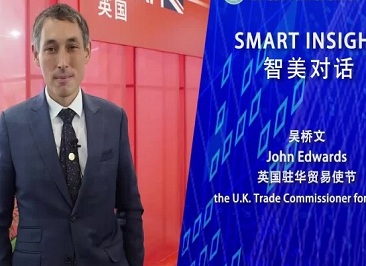..
Chongqing a key trade hub between Europe and Southeast Asia
Updated: 2018-07-12
By Andrew Moody and Tan Yingzi in Chongqing, China Daily Europe
The Liangjiang New Area - whose name means two rivers, in reference to Chongqing's location at the convergence of the Yangtze and Jialing rivers - is home to 130 of Chongqing's 250 Fortune Global 500 companies. Last year, it attracted one-third, or $3.3 billion (2.8 billion euros; £2.5 billion), of the city's $10 billion of inward investment.
Li Guang is particularly eager to attract investment from across Europe, including Central and Eastern Europe.
"What we can offer European companies is the sort of market they might not be able to get at home, with the huge local population and also potentially the whole of China," he says.
"We are very open about companies coming in here wanting to form joint ventures or some form of cooperation arrangement. We want to attract top industrial teams to Chongqing," Li says.
Jefferson Wang, head of the Greater China government and economic development practice for management consultants A.T. Kearney, says Chongqing, despite being one of the biggest cities in the world, faces a challenge because it is not well-known internationally.
"It is certainly not as well-known as Guangzhou or a number of other Chinese cities, and I think this holds it back a little. It is a major challenge for the local government to do more to promote itself," he says.
"Belt and Road, however, is a major opportunity, since it is at the center of the west of China and can really open the region as a logistics hub."
Wang says it is important to not just focus on rail, with aviation being equally important. The third terminal of Chongqing Jiangbei International Airport opened in August last year, and the aim is for the airport to become a major international air hub and the biggest airport in western China by 2030.
"Of the 69 international routes at the airport, 44 are linked to countries on China's Belt and Road. There is huge potential here," says Wang.
Logistics are vital for Chongqing, since it has emerged as a major manufacturing center with a significant proportion of China's manufacturing moving westward, away from the eastern seaboard and southern China, where the country's economic transformation began 40 years ago after Deng Xiaoping's reform and opening-up.
Shi Rui, deputy director of the modern service industry department at Chongqing's Liangjiang New Area Investment Invitation Group, says logistics challenges have previously held the city back.
"It has always been very challenging for us. We have a local saying that it is easier to get to heaven than out of Chongqing because of the mountains. So for the past 20 years, Chongqing has invested heavily in logistics infrastructure, developing the airport and establishing railway connections," she says.
This has enabled Chongqing to become the world's largest laptop producer in just over a decade.
In fact, one-third of the world's laptops are made in the municipality with Acer, Asus, Toshiba and Sony all establishing major operations.
"Traditionally, Chongqing has been based on heavy industry, but the gradual switch to light industry such as laptop production has been built on developing the city as a logistical hub," says Li Guang, of the Liangjiang New Area Investment Invitation Group.
"The railway connection to Europe has made it easier to transport laptops there and also easier to establish supply chains."
Edward Tse, founder and chief executive officer of management consultancy Gao Feng Advisory, believes Chongqing is representative of a major global shift as China's Belt and Road evolves.
"We are moving away from the world which was dominated by the maritime powers in the 19th century like Britain, and then after World War II by the United States, to one where the countries that were previously landlocked are emerging," he says.
"Chongqing is almost a starting point for this change, linking China through Central Asia to Europe. It is a very natural revival of this axis of the world that once formed the old silk routes."
One of Chongqing's impressive logistics facilities is Guoyan Port, the largest inland river port of its kind in China, which handles 30 million metric tons of freight a year.
The port was opened in 2008 and now has 16 ship berths, each handling 5,000 tons. On a visit to the site in 2016, President Xi Jinping said the port was "full of promise for the future".
The port handles cars - Chongqing is a major car production center, with Changan Ford having a major manufacturing base in the Liangjiang New Area - as well as coal, ore and mining products.
Containers can be offloaded at the port and transported by rail to Europe. The port is one of the most important on the Yangtze River Economic Belt, with goods making the 2,000-km journey downstream to Shanghai.
It takes from 10 to 17 days to transport goods from Chongqing to Shanghai at a cost of 4,000 yuan ($603; 517 euros; £456) per standard container. This is considerably cheaper than the 16,000 yuan by road, which takes 24 hours, and the 8,000 yuan by rail, which takes three to four days.
"We are very well connected to rail, roads and waterways. It is important to have a multichannel logistics network," says Fang Liang, manager of the port's commercial department.
Liu Wanhong, a director of Minsheng Shipping - one of the biggest users of the port, accounting for 30 percent of its container volume - says the port facility has encouraged many companies to locate in the area.
"One of the most important considerations companies have is about getting goods in and out," he says.
Video

UK trade commissioner for China praised Chongqing as a burgeoning center in intelligent manufacturing.





